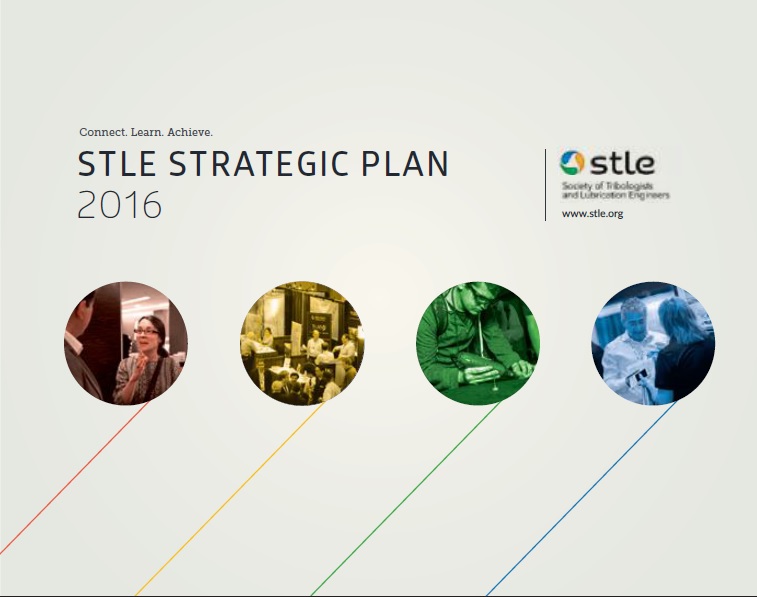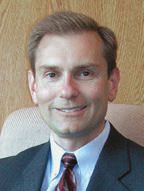Innovation by Association
Edward P. Salek, CAE, Executive Director | TLT Headquarters Report December 2016
If you invite a group of tribologists to a technical conference, will it inspire them to innovate?

STLE’s four-year strategic plan focuses on four ambitious goals.
WHEN IT COMES TO SETTING GOALS, STLE’s 2016-2020 Strategic Plan is definitely ambitious. One of the four goals proclaims that STLE seeks to “advance innovation in tribology and lubrication engineering.”
An association management colleague put that statement into perspective recently with a skeptical observation: “Innovation will be the most difficult goal for STLE to achieve, because you can’t plan for innovation. At best you might be able to facilitate the environment in a way that causes innovation to occur.”
Fair enough, but it got me thinking about the implementation paths STLE already uses and those which might be added or expanded to support this goal in the future. When you examine things from this perspective, our ambitious strategic goal also looks much more achievable.
As an example, consider STLE’s 3rd Tribology Frontiers Conference (TFC), which attracted some 250 people to Chicago last month for three days of technical presentations, student posters and a series of four keynote lectures by invited speakers. While all of these components were working to stimulate innovation, the keynoters offered up ideas that were bound to inspire some of the tribological innovations of tomorrow.
One of the four speakers, Dr. J. Edward Colgate, is a mechanical engineering professor from Northwestern University in the Chicago area. Through his research into what’s known as
surface haptics, Colgate has developed a suite of technologies that aim to give your cell phone controllable tactile properties such as buttons and sliders you can feel. Sounds like innovation to me!
To learn more about this concept, view professor Colgate’s video on
www.stle.org under the TFC page. You’ll also find video summaries of the innovative ideas presented by the other TFC speakers.
STLE’s Annual Meeting & Exhibition has been a driver of technical innovation for more than 70 years. That tradition continues at the 2017 conference, which takes place May 21-25 in Atlanta, Georgia (U.S.). A diverse technical program that addresses virtually all areas of tribology research and lubrication best practices will feature more than 500 30-minute presentations. STLE’s annual meeting has become the one conference where members of the world tribology and lubricants community gather to share expertise. Consider that the 2017 Annual Meeting technical program features more than 50% of presentations made by individuals from outside the U.S. A total of more than 1,400 people are expected to attend.
Inspiration for the innovators of tomorrow also is a major theme of the Atlanta meeting. STLE will conduct its 5th Annual Tribology STEM Camp in conjunction with the conference. The STEM program goal is to expose local high school students who have an interest in science, technology, engineering or math to the fields of tribology and lubrication engineering.
STLE’s pursuit of innovation is not limited to conferences that take place in the U.S. Our global outreach activities facilitate interaction with more than 50 other societies and organizations. As part of this outreach, the society participates in and presents at major technical conferences each year in China, Europe, Latin America, Germany and Japan.
In first-quarter 2017, STLE is serving as a partner organization for the 2017 OilDoc Conference & Exhibition in Germany. Since it began in 2011, this event has earned a reputation as one of Europe’s premier conferences focusing on lubricants, maintenance and condition monitoring. Dr. Robert Gresham, STLE’s director of professional development, serves on a distinguished program planning committee with other representatives from Europe, Asia and the U.S. You can preview the conference program, which features more than 90 presentations, and get other details, at
www.oildoc-conference.com.
Later in 2017, STLE and its members will play an active role on the program for the 6th World Tribology Congress, Sept. 17-22, in Beijing, China. This event, organized by the Chinese Tribology Institute, is expected to feature more than 800 oral presentations—including plenary, keynote and invited talks—spread across nine technical tracks. Around 200 poster presentations also are expected. STLE President Ali Erdemir (Argonne National Laboratory) is one of six plenary speakers. Go to
www.wtc2017.org for more details.
Whether STLE is able to advance innovation or merely facilitate it remains an open question. What is without question, however, is that tribology has a vast economic and commercial impact. Our science reduces energy use, lowers the cost of maintenance and replacement, develops new technology and solves resource problems such as the lack of clean water. STLE research projects that the dollar value of that impact is likely more than $400 billion annually in the U.S. and up to $2 trillion globally.
Those are numbers that make our ambitious goal worthwhile!
 You can reach Certified Association Executive Ed Salek at esalek@stle.org
You can reach Certified Association Executive Ed Salek at esalek@stle.org.